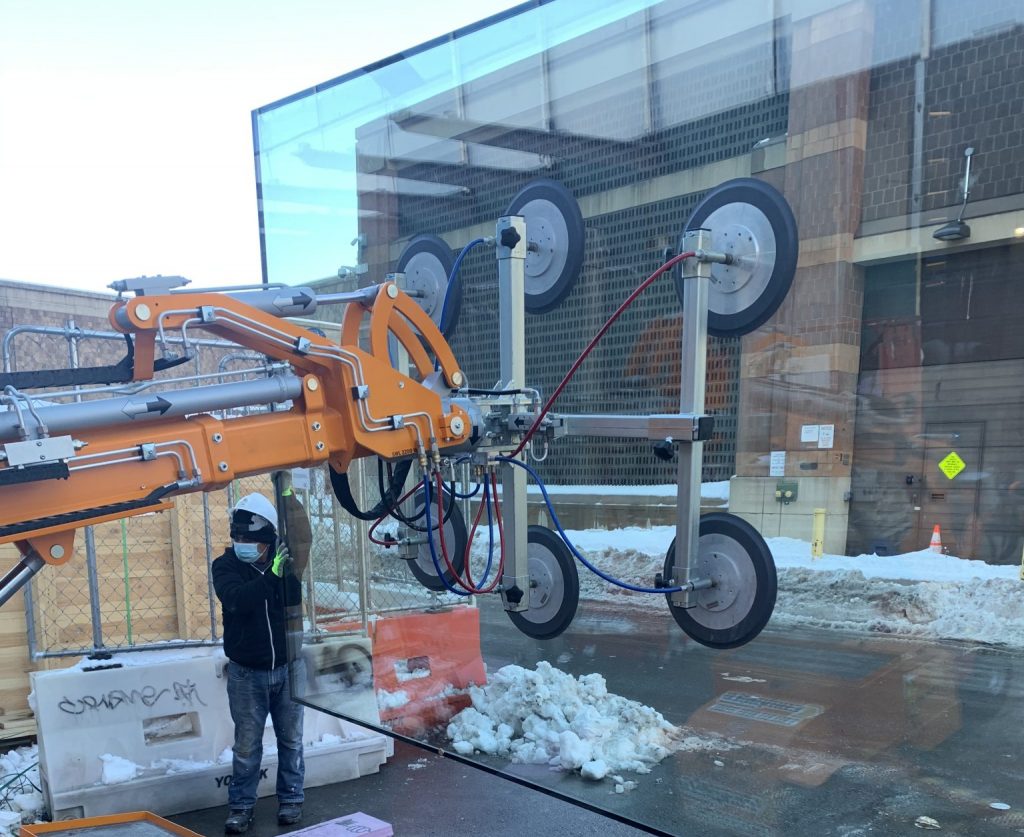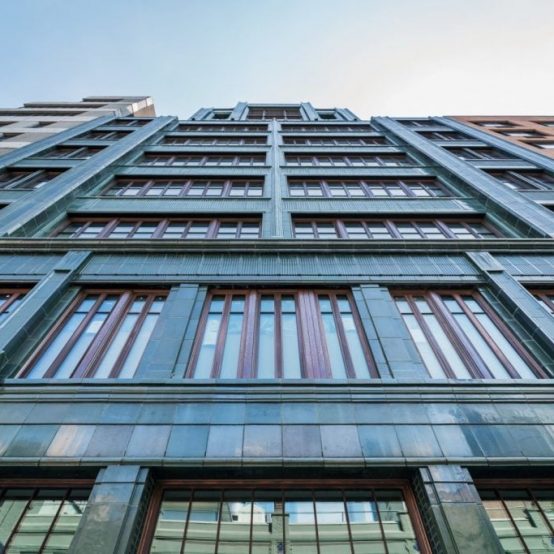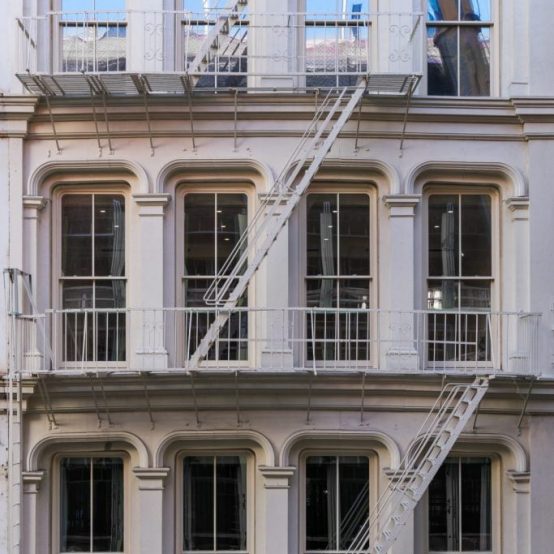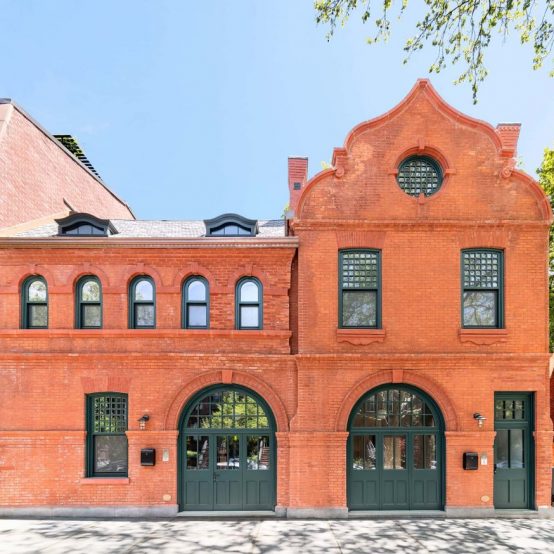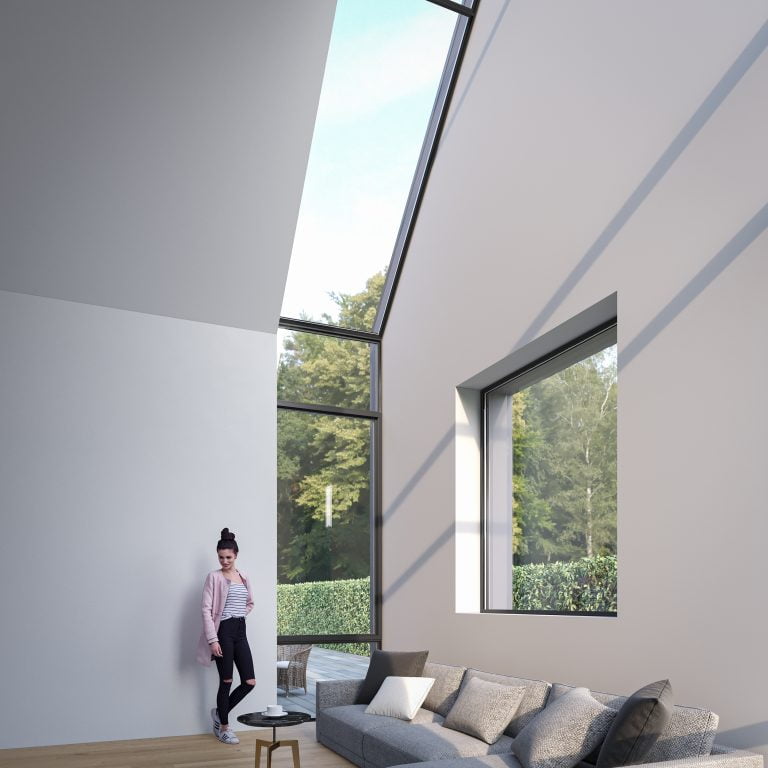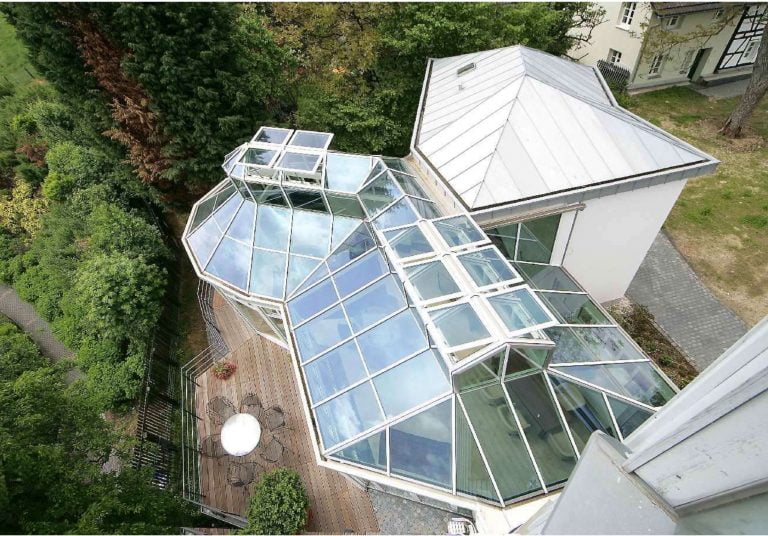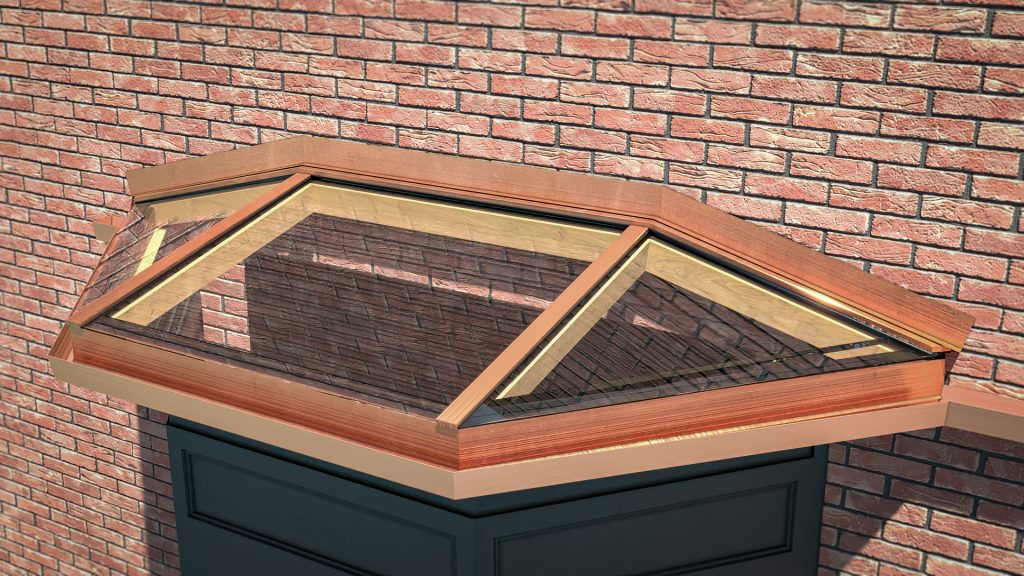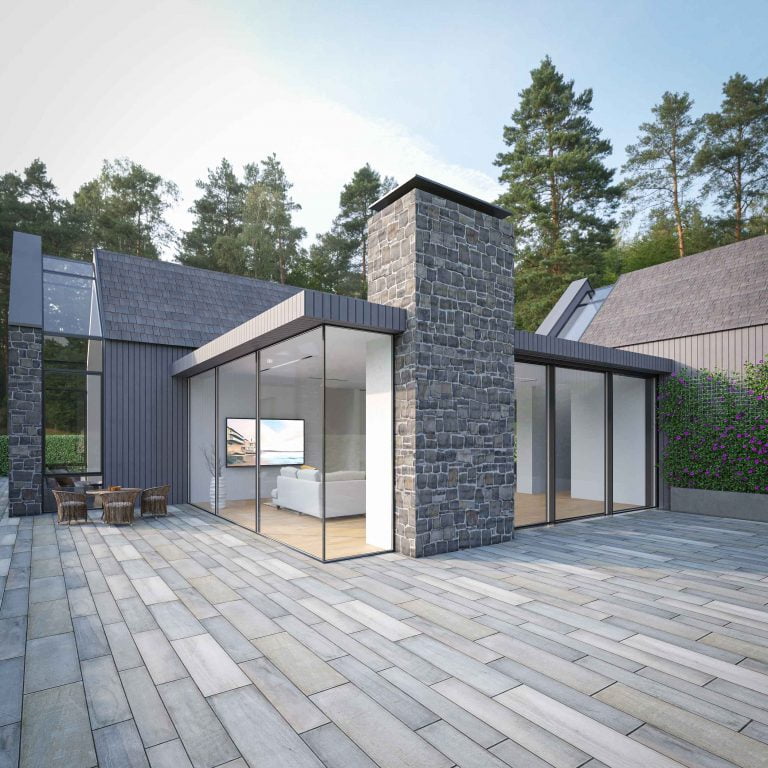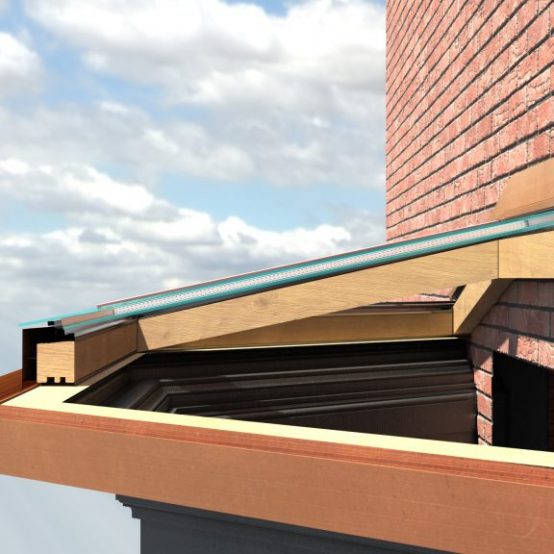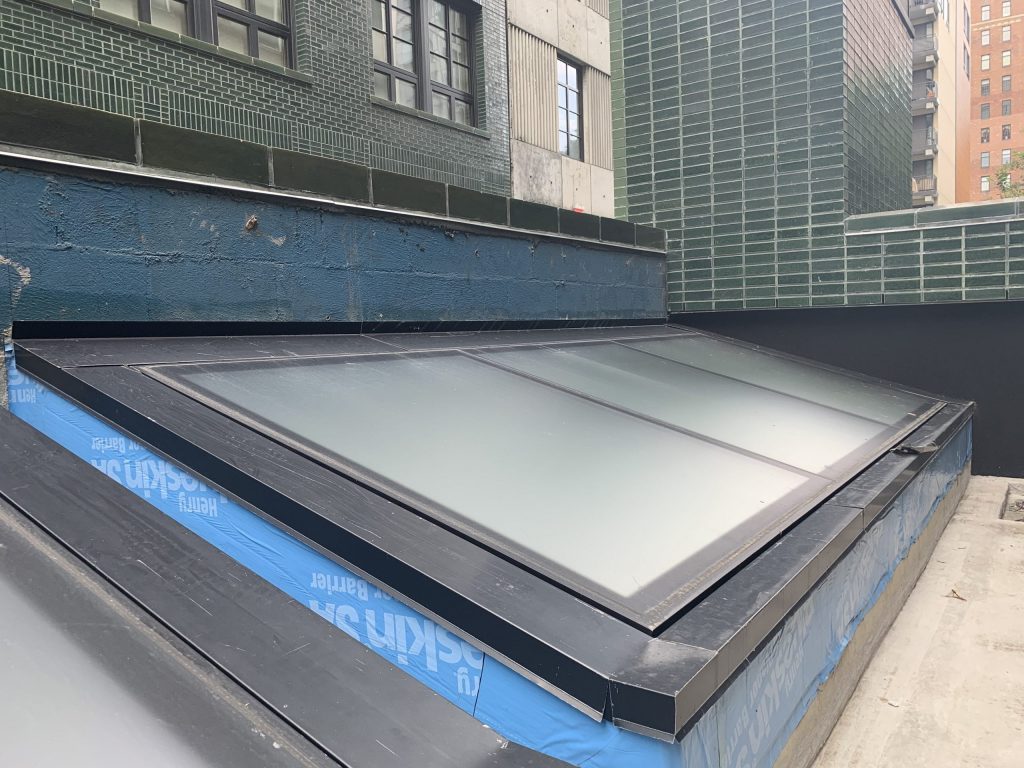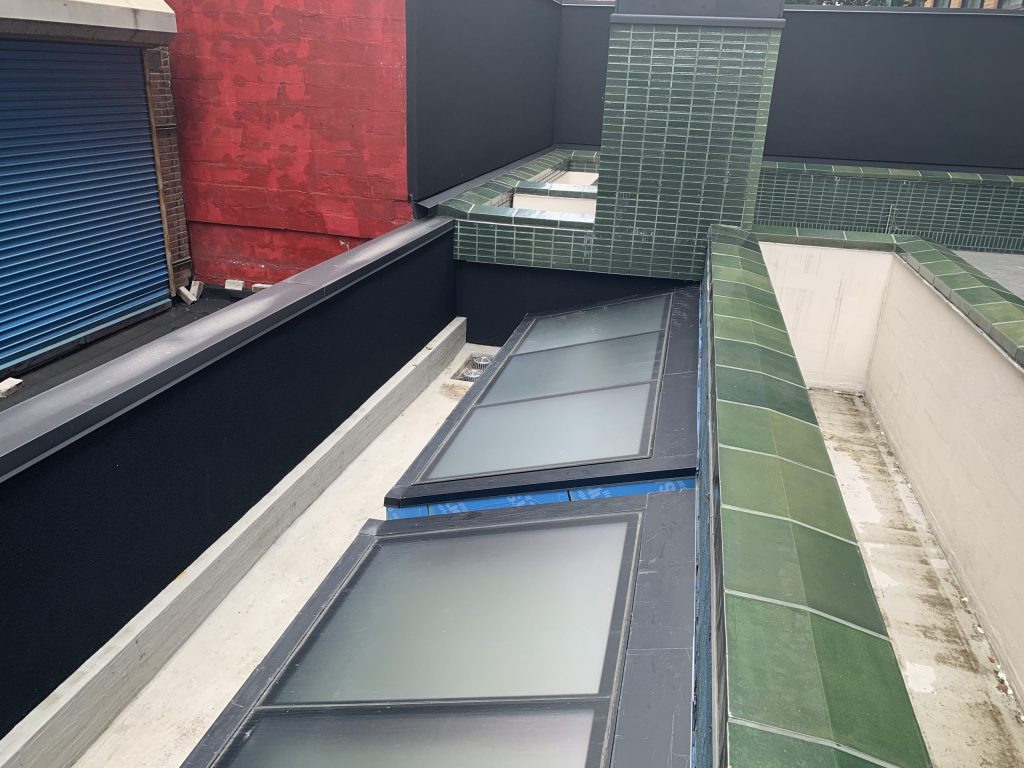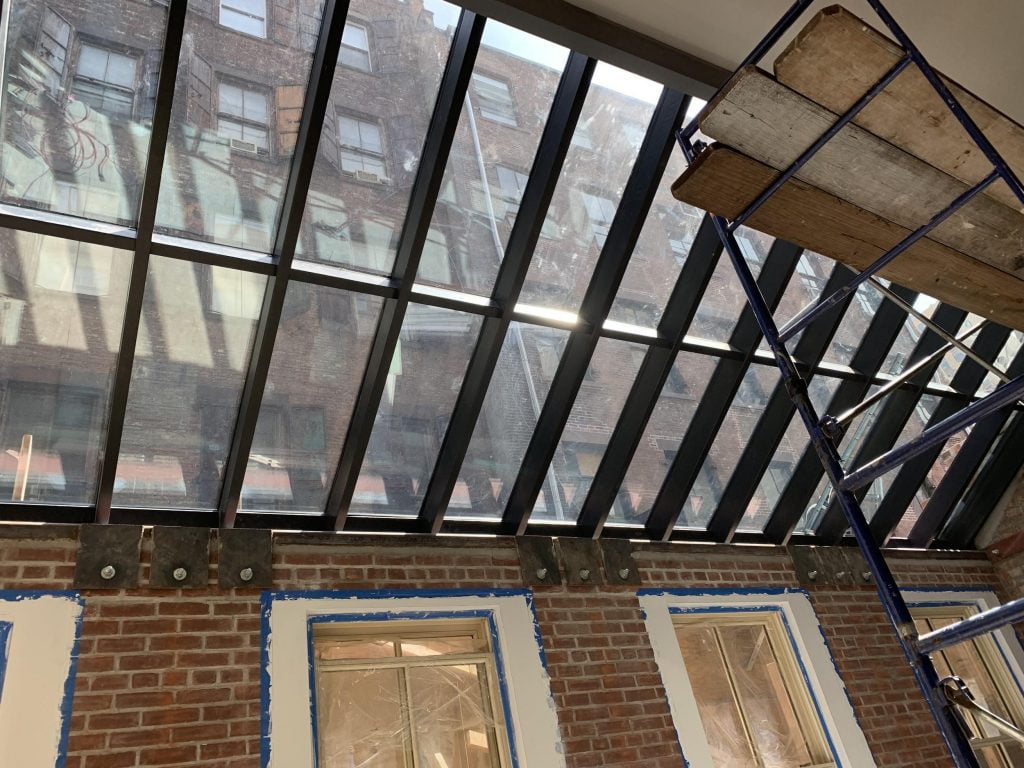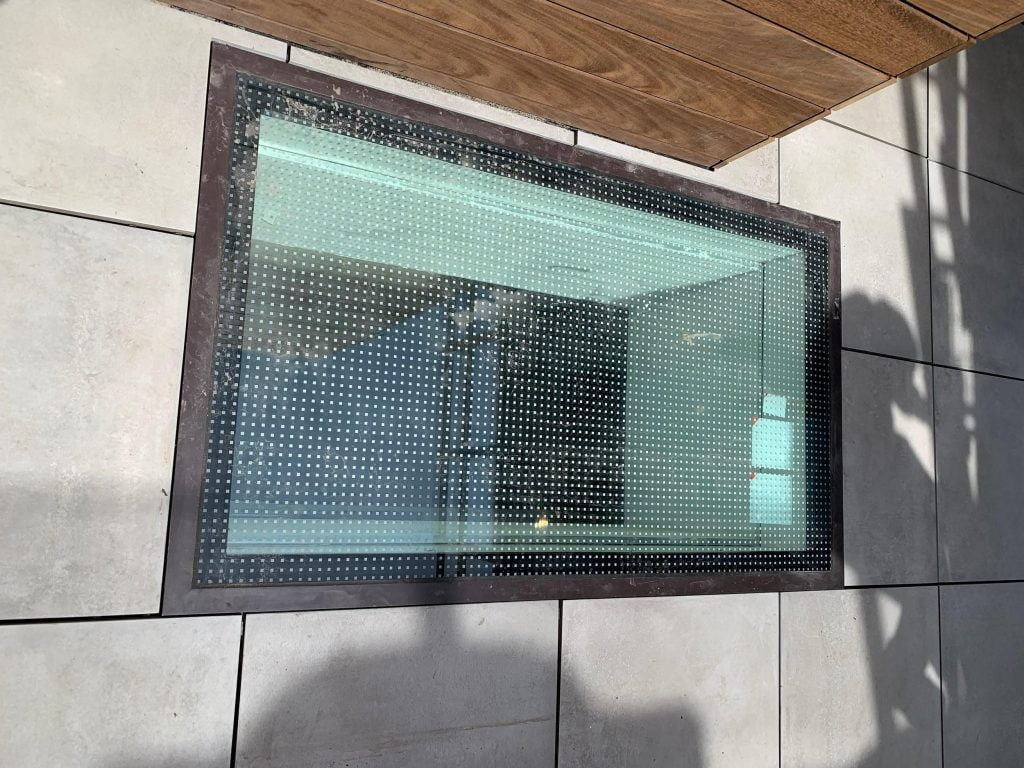Everything You Need to Know About Glass Types and Performance Ratings
When people first began putting single panes of glass in windows almost two thousand years ago, they performed the relatively simple task of keeping the inside of homes wind and rain free. Fast forward to today and advances in technology have meant that glass can be manipulated and customized to be more efficient, retain more heat, better soundproofed, as well as being an effective way of keeping intruders out of your home. All of these things are done via a combination of more efficient manufacturing processes, coatings, gases, better-constructed IGUs, and higher-performing glass.
If you’ve ever wondered about glass types or performance ratings, we’re going to explain them to you in plain language in the hope that you will have a better understanding of exactly the kind of glass you need for your windows and doors. We know that when you begin looking into it, it can be difficult to know that you are choosing windows and doors which not only look good, but perform well over time. Should I choose double or triple glazing? High or low U-Value? Tempered, laminated, or impact-resistant? Do I need to consider Solar Heat Gain Coefficient?
As purveyors of high-quality windows and doors, we thought we could share a little of our expertise with you. Our article will explain in plain language some of these essential questions for you and give you a better understanding of what you need for your home.
Understanding Glass Performance

First, there are some ideas and principles that you’ll need to have a working idea of. These will help you better understand what type of glass might be suitable for your environment and climate.
U Factor
U-Factor (also known as U-Value) is one of the most important aspects of choosing windows and doors. It measures how effectively a window can retain heat inside a home and reduce heat loss. The lower the number, the more heat it retains. So, a window with a U-Factor of 0.20 will retain heat better than one with a value of 0.5. The climate you live in plays a very big role in determining the U-Factor you’ll need your windows to have. More on this below.
Windows have an enormous effect on a wall’s R-Value. R-Value is the rate at which a material resists heat passing through it. A high R-Value means the material (e.g. insulation) is effective at resisting heat flow. As you can see from the diagram, windows with a lower U-Factor can dramatically increase a wall’s R-Value
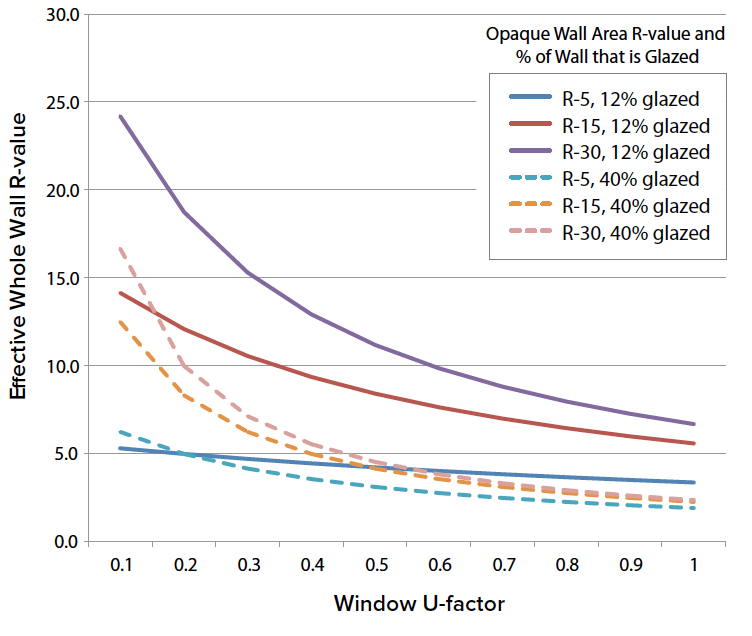
Solar Heat Gain, Visibility Transmittance, and Gases
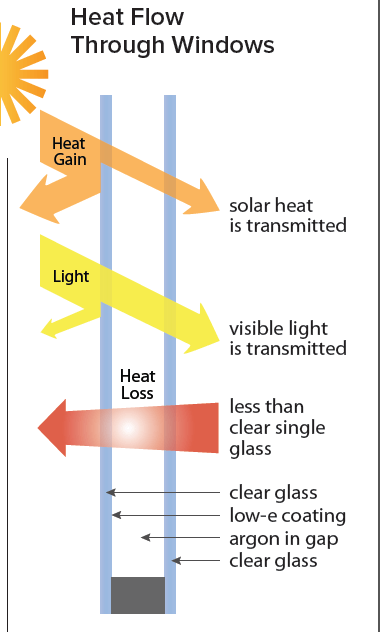
Solar Heat Gain Coefficient (SHGC) is simply the amount of heat that enters a home via its windows. Most of this heat will be natural heat (radiation) from the sun. The lower the number, the less heat it lets in. Conversely, windows with a high SHGC level will allow more heat into the home.
Visibility Transmittance is a scale which helps determine how clear the glass is. This can be affected by things such as Low-E coatings (more on these below), which slightly reduce clarity. For more information on this, you can read about it on the Department of Energy website.
Though not strictly a feature of glass, Gases play a very important role in the overall performance of windows and doors. Traditionally, the space between panes of glass was left empty. However, advances in technology have shown certain gases (which can be denser than air) can actually reduce heat loss in your home.
The most commonly-used gases are argon and krypton. Of those, the most widely used gas is argon. Argon has been shown to significantly reduce unwanted heat loss. Argon has a thermal conductivity rate 67% lower than air. In windows which have been filled with argon, argon usually makes up roughly 95% or more, with air usually comprising 5% or less.
Choosing The Right Glass Type For You
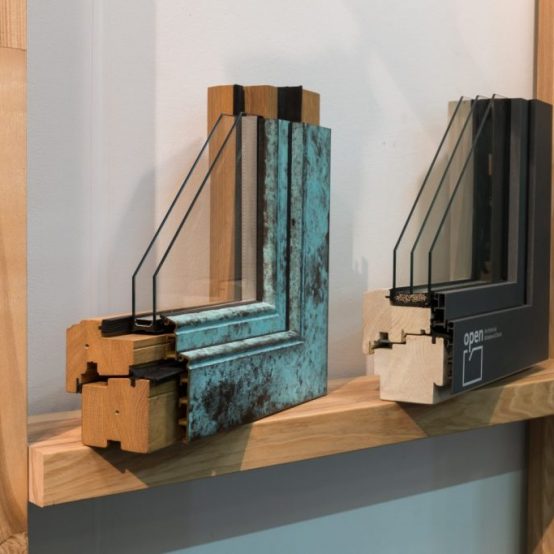
Despite what you might want out of a window, there are several important factors which you need to address. Some of these factors are more or less out of your control. The most important factor here is what kind of climate you live in. If you live in a very cold climate, for example, you should consider investing in windows that will minimize heat loss and increase the amount of heat that can enter your home. What this means, then, is you want a lower U-Factor and a higher SHGC. In warmer climates, this means that you would be better off with windows that have a higher U-Factor and a lower SHGC.
Regardless of your climate, however, everybody should consider investing in high-quality, well-made windows. Heating, Ventilation, and Air Conditioning (HVAC) systems represents a whopping 40% of the average homeowner’s energy bills. This is a huge proportion and investing in more efficient windows will drastically cut this.
How Many Panes?
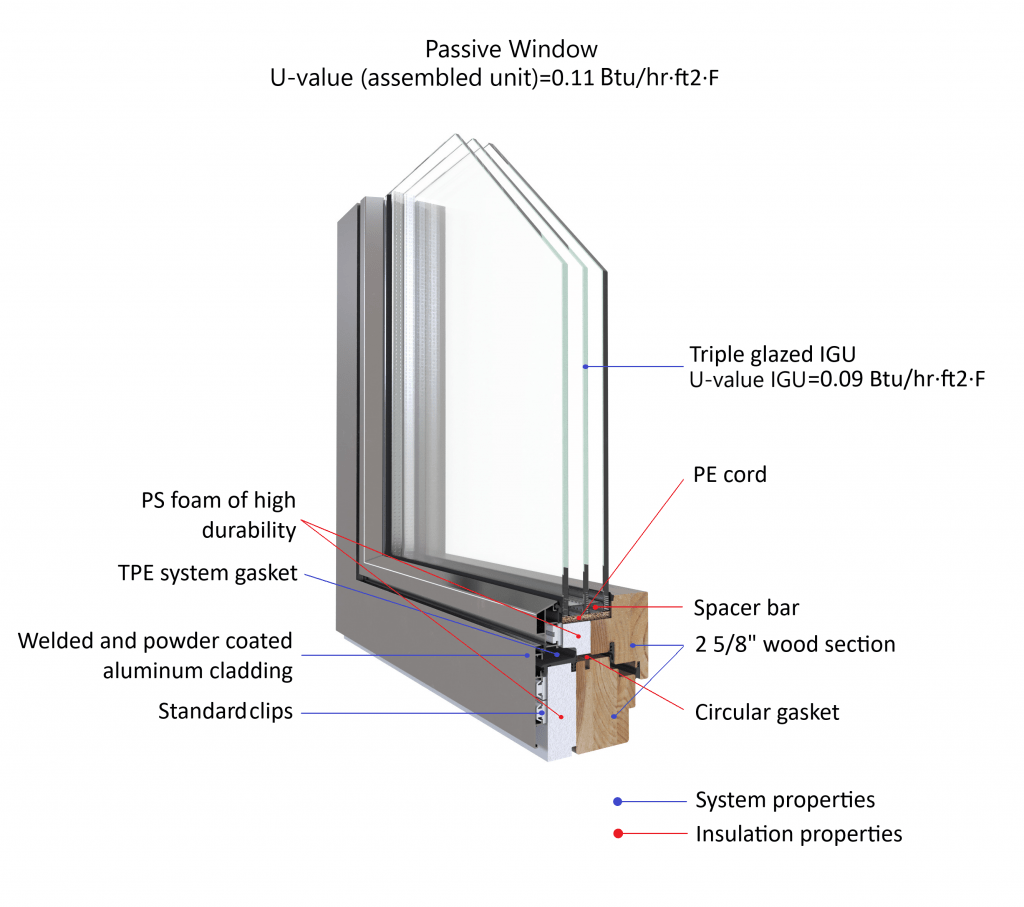
It should go without saying that two panes are better than one. Single glazed windows arose out of necessity but, over the course of the past century, have been largely replaced by more efficient, double-glazed windows. Modern and more scientific methods for manufacturing glass and window frames have meant that windows can actually bear more weight but have even smaller frames, which is what most people want.
Triple-glazed windows are, of course, even better again. People living in colder climates with harsh winters, in particular, should strongly consider investing in. More glazing will add more weight to the windows, provide another layer to be filled with argon gas, and another opportunity for more Low-E coating. Each of these aspects will dramatically improve its overall thermal efficiency.
A third layer of glazing will also significantly reduce the amount of condensation on the inside of your windows. It will act as a more effective barrier against noise pollution, which is particularly important in built-up and urban areas.
Low-E Coatings
Although natural sunlight can bring in some much sought after sunlight and heat, it also brings in ultraviolet rays which cause floors, walls, and fabrics (sofas; cushions etc.) to fade over time. These rays also can cause harm to our skin. To combat this, microscopically-thin, completely see-through, metal coatings were created to lessen the impact of this. Low-E (low-emissivity) coatings use silver to reflect heat. In summer, it reflects the heat entering a house; in winter, it reflects the heat leaving. In essence, it functions very similarly to a thermos (which often contains silver)–it allows you to maintain the desired temperature inside. Warm when you want it to be warm; cold when you need it to be cold.
Within Low-E coatings, there are a number of different ways to adjust the amount of heat which passes through your windows. This can be achieved by adding additional layers or by altering which panels are coated. The level of protection you need will depend on your environment and whether or not your house is in the shade.
Styles
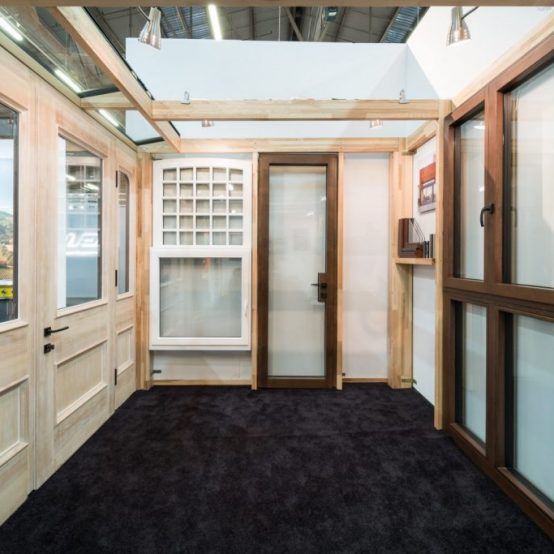
There are many different window styles available. Each style comes with its own unique benefits. Some styles will suit more traditional homes better; whereas others will be more at home on more modern and contemporary buildings.
As you’ll see from the pictures below, choosing ultra-slim profile windows will ultimately have quite a different impact on your facade than choosing slightly thicker, more traditional ones.
There has been a trend towards more slimline windows in recent years. In our experience, this is a trend which has increased year on year. As a result of this, muntins—which were historically used as structural components to divide panels of glass within a window—have become slimmer.
Pictured from left to right: Vanderbilt Avenue, The Fitzroy, and 10 Greene St. Open Architectural Windows and Doors worked closely with the architects to come up with windows and muntins which reflected a holistic design aesthetic.
Windows with functioning muntins in them are known as authentic divided lites. Muntins were originally a practical solution. However, as technology advanced, and the materials for window frames become stronger and efficient, it was unnecessary to actually use multiple glass panels. Instead, it became possible to use one, large glass panel. To recreate the same aesthetic effect of divided lites, simulated divided lites were created. These rest on the window and look almost completely identical to true divided lites. However, they don’t form a structural part of the window.
Another types, although less popular, is grille-between-the-bars. This type features an internal, between the panes. This creates a similar look to muntins, but these windows will be particularly easy to clean.
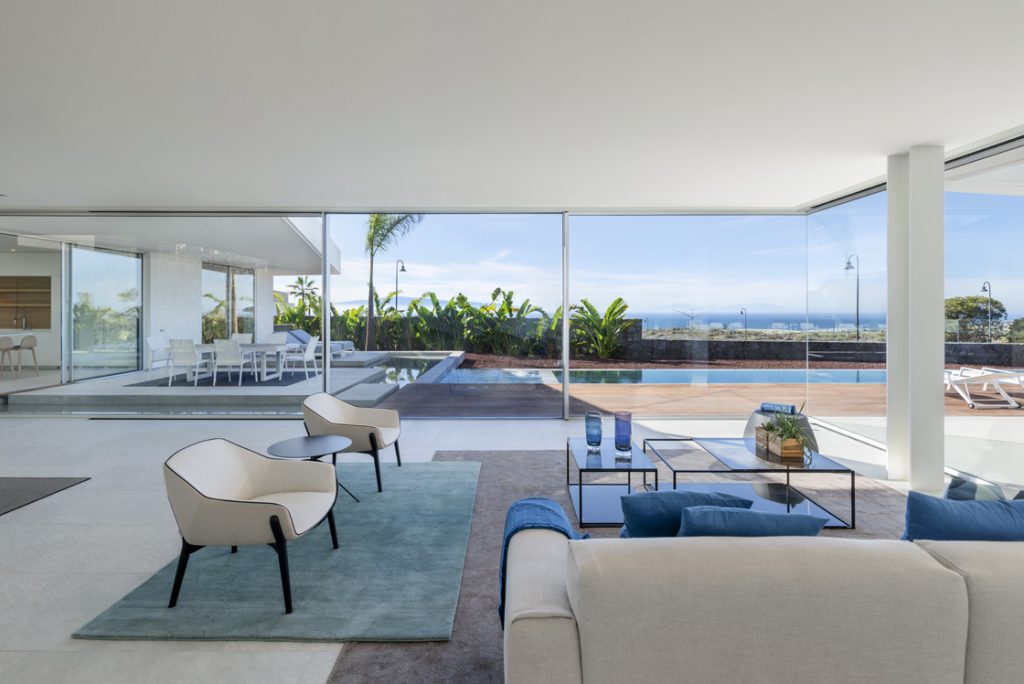
In some cases, people want windows which don’t have muntins. The benefit of this, of course, is unobstructed views. You must also remember that windows aren’t just how you see the world–they’re how the world sees you. Windows do make a difference to your home’s facade, so spend some time thinking about which would suit yours best.
For a more on the specific types of windows styles available ( Double-Hung, Tilt and Turn etc.,) please click here.
Soundproofing
Sound Transmission Class (STC) ratings are the measure by which we determine how something—in this case a window or a door—stops the flow of sound. When choosing windows for your home, it is important to take several things into consideration. For people whose homes are within earshot of traffic, car horns, low-flying airplanes, sirens, construction noise, or even loud neighbors, your home will be subject to much low-frequency (i.e. loud noises from a distance).
Many windows are unable to withstand such low-frequency noise. If that’s the case, then your window might only let it unwanted noise, but could also cause vibrations, too. In this instance, you would need a lower STC rating. When choosing windows, it is important to discuss your needs with whomever is designing and installing your windows. Moreover, you should consider windows which have additional coatings and layers. This will ensure optimum sound-proofing.
For more on this, see this article.
Safety and Security
There are a variety of different glazing options available which will add additional safety and security to your home. The most important of these are laminated and tempered glass.
Laminated glass is glass which has a very high breaking point. In fact, even after repeated heavy blows, the glass will not smash and shatter. Polyvinyl butyral, which is a strong resin, is used to bind tempered glass glass together to create a glass which is highly durable. It is often used in anti-burglary windows. Anti-burglary glass has a ranking system it uses to measure a window’s security. This is called its Resistance Class (RC) rating and it is graded from 1 (least secure) to 6 (most secure).
Tempered glass is up to four times stronger than regular glass. Unlike regular glass, it doesn’t crack. It smashes into very fine, granular pieces. This means that it is much less likely to cause damage if it shatters. Tempered glass is important for wherever there is a significant risk of someone falling—such as a shower, for example.
If you live in a coastal area, or an area in which you are at risk of storms or stormy weather, impact resistant glass is something you should consider for your home. Debris and other flying objects can cause serious harm and do serious damage if they make contact with windows. Impact resistant glass contains laminated glass but will often also be tempered. Windows with this of kind of glass, designed specifically for high-risk environments, will also need more robust frames also for the necessary strength.
In terms of Decorative glass, tinted and frosted glass are popular choices for some. They are particularly popular choices for bathrooms, studies, or any room in which privacy (and light) is important. These types of glass can also add a flourish to doors.
Once You’ve Chosen Your Glass
To be clear, having double or triple glazed, thermally-broken windows, Low-E coatings, well-constructed IGUs, are very important factors when it comes to windows. However, it is imperative that you have licensed and certified specialists install your windows. This will ensure that they are properly installed and completely airtight, windproof, leakproof, and that there is sufficient weather-stripping.
Similarly, it is equally important that your home’s insulation be as thorough as possible. Good windows can only be effective with good insulation, and vice versa.
Contact Us
If you’d like to discuss this further, and learn more about the ideal type of windows for your environment, we’d be happy to give you a free consultation. Just give us a call on 929-202-2558 or email us at info@openawd.com and someone from our team will be in touch.


